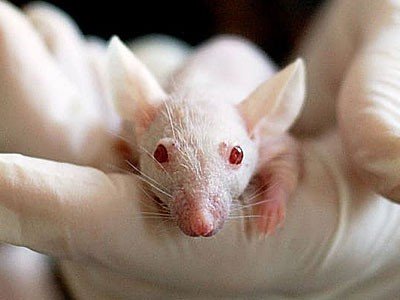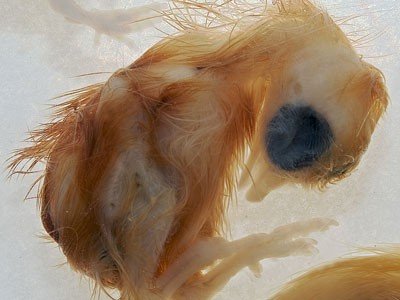Conquering Epidemics by Homeopathy
Volume 1 :: Issue 1 - May 2020

Editorial
Conquering Epidemics by Homeopathy
May 01, 2020 by Dr. Punit Srivastava,
An Epidemic (derived from Greek words epi "upon or above" and demos "people") is the rapid spread of disease to a large number of people in a given population within a short period of time. Epidemic diseases are the scourge of human civilization. Time and again survival of human societies has been threatened by epidemics.
Interview
Corona Virus Disease (COVID-19) Outbreak and Homeopathic Perspective: An Interview with Dr. Ajit Kulkarni M.D. ( Hom.).
May 01, 2020 by Dr. Ajit Kulkarni,
Dr. Ajit Kulkarni in this interview by a homeopath Roma Buchimensky discusses about the COVID-19 Pandemic and its homeopathic approach. He also addresses the day by day progression of the disease and associated pathologic changes. He also elaborates the concept of homeopathic prophylaxis, homeopathic vaccination and Genus epidemicus. Dr. Kulkarni further explains the miasmatic influence and discusses the stage wise likely remedies for prevention and treatment Covid-19.
Featured articles
Homeopathy: a Preventive Approach to Medicine?
May 01, 2020 by Marcus Zulian Teixeira,
Similia Similibus Curentur is the foundation of Homeopathy; by applying the principle of therapeutic similarity, homeopathy seeks to stimulate the organism to react against its own disturbs. For homeopathic medicines to awaken effective homeostasis responses they must be individualized, this means that they must be chosen according to their similarity to the set of characteristic symptoms in patients.
Homeopathic Prevention and Management of Epidemic Diseases: a Summary
May 01, 2020 by Jennifer Jacobs,
Homeopathy has been used to treat epidemics since the time of Hahnemann. Different strategies have been used for it, including individualization, combination remedies, genus epidemicus, and isopathy. This article explores the evidence for each of these approaches. While individualization is the gold standard, it is impractical to use on a widespread basis.
Genus Epidemicus: A Research Review
May 01, 2020 by Dr. Partha Pratim Pal,
Genus epidemicus remedies play a major role for selecting specific homoeoprophylaxis in epidemics. These are specific remedies selected by group anamnesis to target against a definite infectious disease. The historical review of use of homeopathic medicines as genus epidemicus shows that if given properly it can be used for both preventive and curative purposes. This paper gives an evidence based review of how specific prophylaxis have effectively controlled epidemics
The Future of Homeopathy: Homeopathy for Epidemics, Collective Trauma and Endemic Diseases & How to Boost Immunity against COVID-19
May 01, 2020 by Harry van der Zee,
This article discusses how homeopathy has helped in effective control of Epidemics in the past and how by learning from them we can deal with the present and future. It explains that Epidemic diseases are sign of collective dynamis. It also addresses how collective disease can follow a collective trauma- the events causing malfunctioning of the immune system showing how circumstances and susceptibility come together to create disease; a collective trauma can be both cause and effect of an epidemic.
Research papers
Homoeopathic Genus Epidemicus 'Bryonia alba' as a prophylactic during an outbreak of Chikungunya in India: A cluster -randomised, double -blind, placebo- controlled trial
May 01, 2020 by KR Janardanan Nair,
The research paper addresses the efficacy of Homoeopathic Genus epidemicus in prevention of Epidemics. It also explains the effective method of finding Genus epidemicus for prevailing epidemics. The study effectively uses Bryonia alba 30C as preventive for Chikungunya during its epidemic outbreak in Kerela while earlier in preventive study by Rejikumar et al. Eupatorium perfoliatum was used as the Genus epidemicus.
Preventive and Curative Role of Belladonna 200 Against Japanese Encephalitis Virus Infection in Adult Mice
May 01, 2020 by M. Sen Gupta,
About 3 billion people are now at risk of Japanese encephalitis (JE) having its focus in South East Asian and Oceanian countries. There is no treatment of this disease and vaccination is still not adopted as a national program by most countries endemic to the disease. Thus this study was aimed to see possible preventive and curative effect of “Belladonna-200” against JE.
Changes in viral load in different organs of Japanese Encephalitis virus-infected chick embryo under the influence of Belladonna 200C
May 01, 2020 by Urmita Chakraborty,
The experiment showed that Belladona 200 reduced the severity of Japanese encephalitis by diminishing the viral loads in brain. The study further suggests that pre-treatment of Belladonna 200C may reduce the viral entry, its propagation in different organs particularly in the brain and thus may reduce the pathological sequel of the disease.
Homoeopathic Treatment of Japanese Encephalitis in The Light of Recent Scientific Progress
May 01, 2020 by Milan Sen Gupta,
This paper explores the use of homeopathy medicines in different stages of Japanese Encephalitis. It was found that Belladonna is useful in first stage of encephalitis without effusion. Helleborus is effective in the second stage of the disease with effusion, stupor, dragging of legs and developing paralysis. Finally Phosphorus is indicated when complete paralysis appears due to inflammation and degeneration of brain cells.
Clinical research protocol to evaluate the effectiveness and safety of individualized homeopathic medicine in the treatment and prevention of the COVID-19 epidemic
May 01, 2020 by Marcus Zulian Teixeira,
This paper presents a protocol with the objective of investigating, in a randomized, double-blind and placebo-controlled clinical trial, the effectiveness and safety of possible individualized homeopathic drugs of epidemic genius of COVID-19, in adjuvant and complementary treatment of patients affected by the disease. If effectiveness and safety of medicine chosen is confirmed using this protocol, the medicine may be used in a generalized and collective manner in the treatment and prevention of the current epidemic.
Historical papers
Cure and Prevention of Scarlet Fever
May 01, 2020 by Dr. Samuel Hahnemann,
This pamphlet was published at Gotha in 1801. This was one of the first works of Dr. Hahnemann wherein he discussed the role of Homeopathic Medicines in Curing and preventing Epidemics. In this paper he discussed the symptoms of then prevalent epidemic of Scarlet Fever and how to use Belladona as preventive for it.
Email - mail@homeorizon.com




















